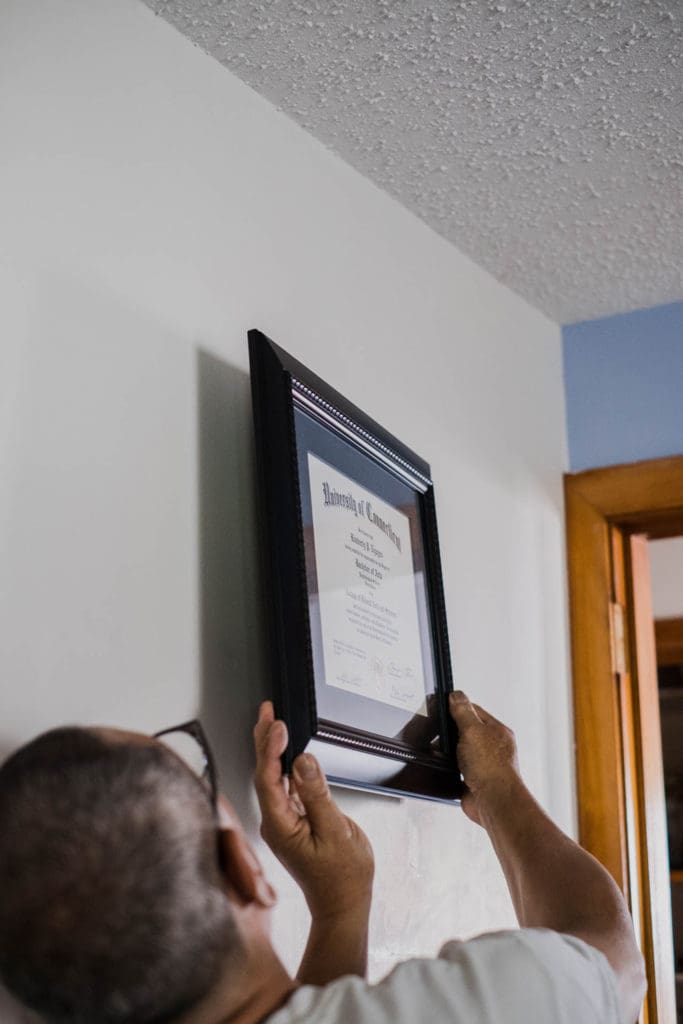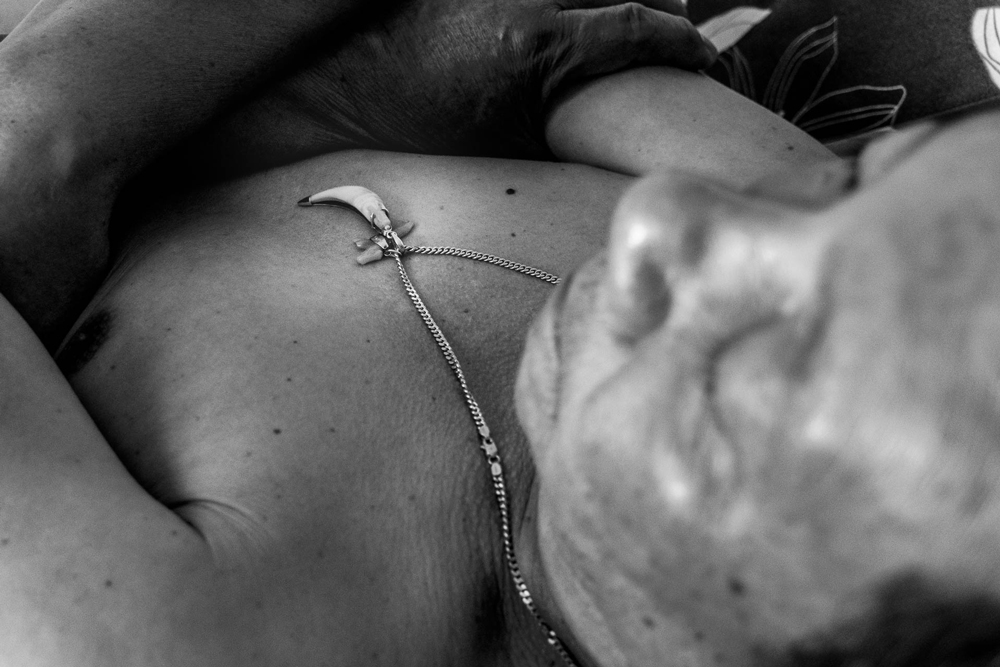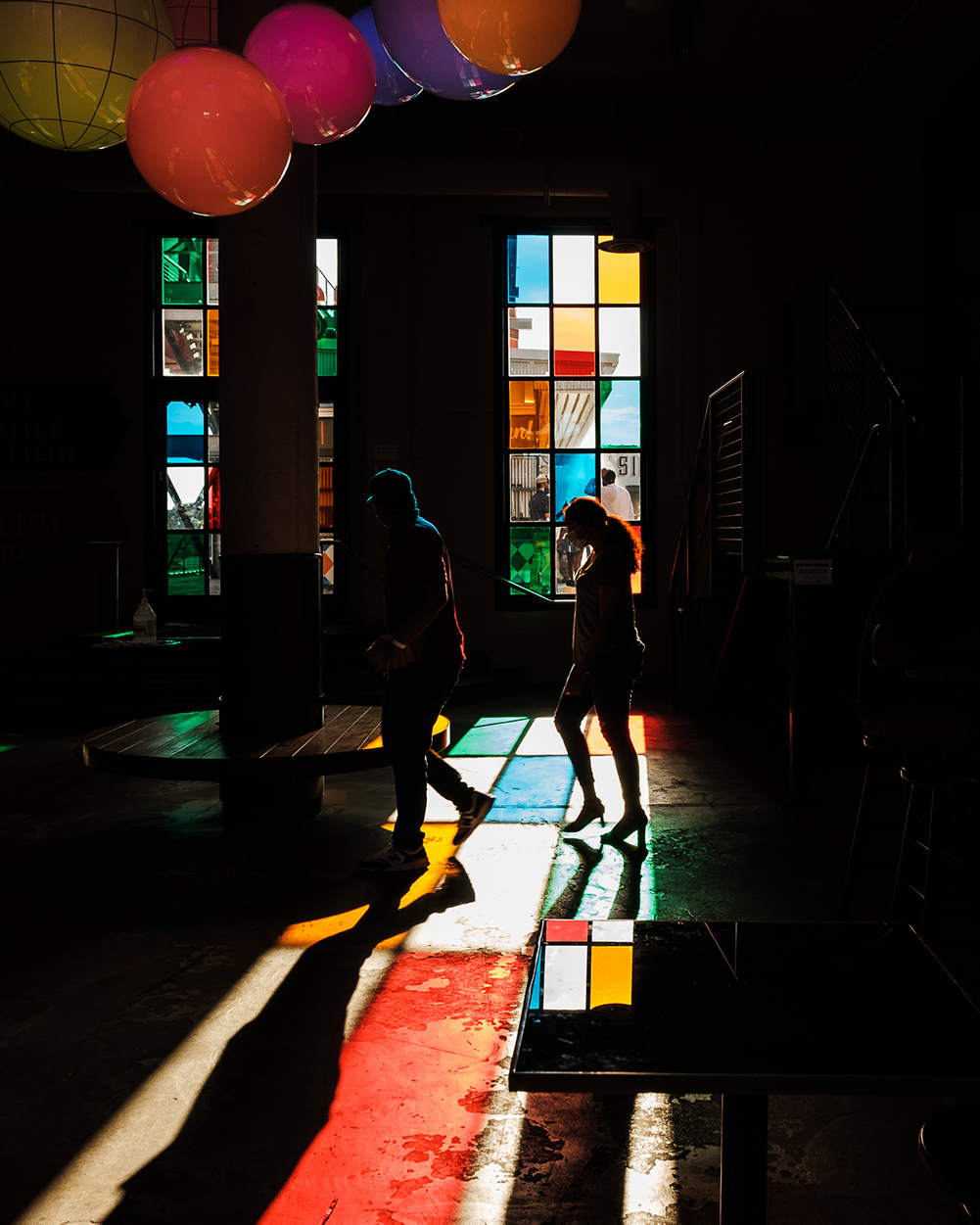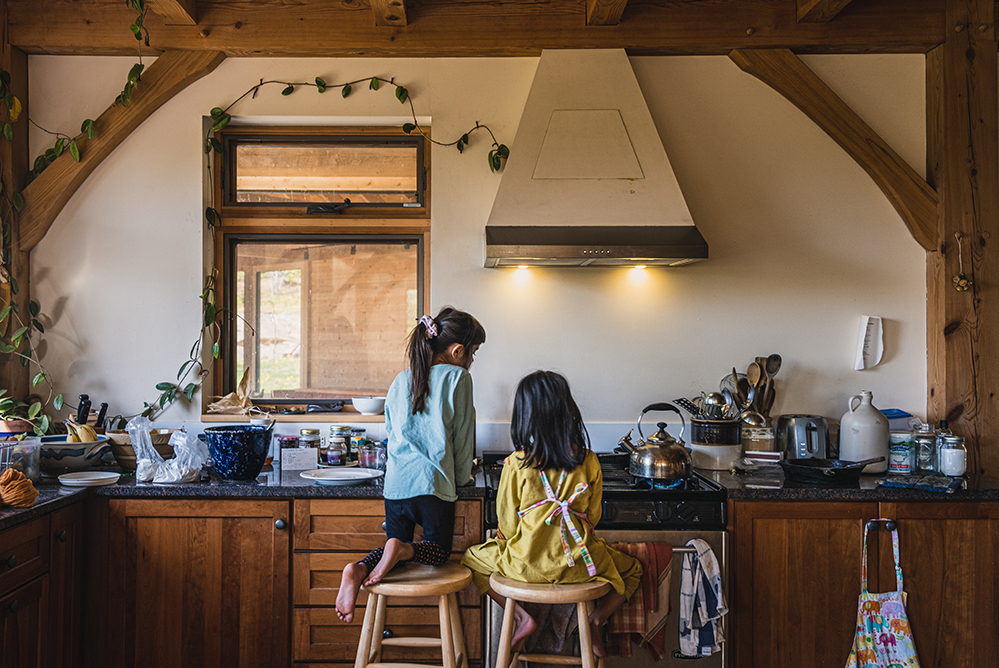 Students of Storytelling
Students of Storytelling 
Fujifilm Students of Storytelling: Kimberly Nguyen’s Family Legacy
September 9, 2020
My dad spends time on the weekend watching Netflix to relax. Here, he’s on the couch watching an action movie and wearing his gold chain with an ivory and jade pendant. Photographed on a Fujifilm X-T4 camera with an XF 16-55mm f2.8 R LM WR lens.
Kimberly Nguyen honors the importance of family with her narrative on how her father, a blue-collar worker from Vietnam, journeyed to America and what his life has been like here as an immigrant.
Nguyen won the Fujifilm Students of Storytelling competition for this compelling project on her father: “With this series, I hope to develop my own sense of identity as a minority in my community and country,” she says.
Fujifilm created the contest to identify the next generation of U.S. storytellers, and to provide them with Fujifilm X Series or GFX System gear to bring their vision to life.

Photographed on a Fujifilm X-T4 camera with an XF 16-55mm f2.8 R LM WR lens.
All Photos © Kimberly Nguyen
Rangefinder: What interests you as a storyteller?
Kimberly Nguyen: Honestly, this is the first time I have ever took photos with the intention of telling a story. When I started out in photography, I enjoyed taking photos of people that showed just how beautiful they were both inside and out. As a budding storyteller, I have been watching stories told by other visual storytellers to learn their craft and adapt my own personal techniques. The stories I am drawn to are those of individuals; stories of triumph that have some kind of happy ending or cliffhanger. I love stories of hardships or musings of individuals because it’s so easy for me to lose myself in someone else’s narrative and find connections to my own.
Rf: What stories do you want to share through your work?
KN: I want to share immigrant stories. Not all of them are our version of spectacular per se, but all of them deserve their screen time. Every immigrant is a character in their own hardships. There are so many barriers to being an American immigrant, with just a small fraction of them being language, family, money and more. With my dad’s story, I want to show how a blue-collar worker from Vietnam can have experiences to tell and share. I would not be who I am without the values that my dad has instilled in me, and there’s much about his life that I have yet to know. It’s not traditional in our culture to share ourselves fully, at least that’s what I think. It makes me uncomfortable to ask, so this project is almost the easy way to ask the questions that I’ve wondered about other immigrants, but never my own father.

Rf: Describe the evolution of your style and approach. How has it changed over time? Why has it changed?
KN: My style originally was just to use simple natural light, like having my subjects basking in the glow of a sunset. Now I’ve found that more of my photos have been grittier, more contrasted and not as heavily edited as my portrait or event photos. I believe it’s changed the way I approach my photography because I’m really trying to delve into my dad’s life as much as possible with my lens. It’s definitely a raw subject for me, and it shows in how I edit and compose my photos.
Rf: What (and who) has influenced your work, and how?
KN: Many of the friends whose work I follow at the University of Connecticut’s independent student newspaper, The Daily Campus, have a way of capturing human emotions in the events they cover that inspire me all the time. Those photos might come from a sports game, a concert or various other student events. They’re able to capture the subject encompassed in the environment around them and their stand-alone images tell a story. That’s how I want to capture my dad, not only as a product of his environment but also as a major contributor in shaping it.
Rf: What are the key things you have learned or done that have helped you advance your career since you began shooting?
KN: One of the most valuable things I’ve done since I picked up a camera a little over three years ago is to ask to tag along taking photos or just go on walks on my own, inviting a friend or two to join me. It’s important for me to be able to use my camera in all kinds of situations, most of which I never expect. Although I can never foresee what will happen when I take my camera next, at least I know to expect the unexpected and know my camera as well as I can to face a new photo adventure every time.
Rf: What is the most helpful piece of advice you’ve received and followed? Who gave it to you?
KN: My friend Amar Batra told me to just go out and take photos. I could look at other’s people work as much as I wanted and admire their technique, but at the end of the day, it’s their photos, not mine. I won’t truly know what I’m capable of until I get out of my head and just hit the shutter again, and again and again.
I hope to find my own personal voice in the images and when you look at my photo, I want you to think, “There’s definitely no one else who can take this but Kim.”

Rf: What have you learned about your legacy while producing new work on your father’s immigrant experience?
KN: I find this question interesting, as the story of my dad is not new to him, but it’s new to me as I learn more about what my dad does day to day and how his history might have affected that. I hope to be able to continue to connect and learn with him more. I think there was a major disconnect between us when I went to college, and I definitely had a lot of growing up to do. So far, I know my legacy will be hard work, compassion and just doing what needs to be done. There’s a lot of layers and stories from those themes that I struggle with sometimes to put into words, so I can really only show that through images for now.
Rf: How have your studies affected your approach to photography and storytelling?
KN: As a psychology student, I’ve learned about why people behave the way they do. As a student of journalism, it’s my responsibility to report both sides and explain why people behave the way they do for other people to digest. Photography is perfect because it’s a visual representation of the human psyche and human behavior. If I could have submitted my psychology images as photographs, imagine all the human emotions I could have captured. And maybe get more A’s, hopefully!

Rf: Can you tell us about your submission to Fujifilm’s Students of Storytelling program? How you came up with the project?
KN: My original idea was to visit all the places where my father had lived , including his hometown in Vietnam, the Philippines where he stayed at the PRPC (Philippine Refugee Processing Center) camp for a few months before moving to the United States, and a smattering of other places. I just wanted to document that part of my family history and be a historian.
My family has photo boxes in our home of my family in all different stages, and I want to create something similar. I think telling my father’s story is more important as ever, and necessary to stand this project up against the xenophobia that has been running rampant in the country. It breaks my heart and this project is about mending it.
Rf: What works have you produced with your new Fujifilm systems?
KN: When I first got the camera, I had been socially distancing because of the pandemic. I started taking it out in nature and playing with all the bells and whistles, of which there are many, until the camera basically became an extension of me. My friend just adopted a puppy, so besides a lot of photos of my dad for my project, it’s been a ton of photos of the little guy. Both subjects are funny, young at heart (one a little more physically younger of course) and both and have a lot of love to share.

Rf: Where do you see your work going from here?
KN: I wonder sometimes if I should extend this project to tell more stories of my family. It’s something that I am considering, as I see this role of family historian as something I want to take on almost for the rest of my life. At the very least, I want to publish a photo book for my dad and family to see and have permanently, as a tangible reminder that his story matters and for the rest of our legacy to be passed on that way.
Rf: Which brand, media outlet or agency is your ideal client? And why?
KN: When I think of an iconic platform to share photography and ideas, I think of Time magazine. Their front covers always gain buzz because of a single, striking image. I think that’s what my personal goal as a photographer is—searching for that one perfect photo that evokes emotion for the rest of my life. I have a magazine that my dad gave me from 1989 titled “150 Years of Photojournalism.” I can only dream of my images having that kind of impact long after I’m gone.
Visit the official Fujifilm Students of Storytelling site for more information about the complete program. Follow @keemkaptures to stay up to date with Kimberly Nguyen.





